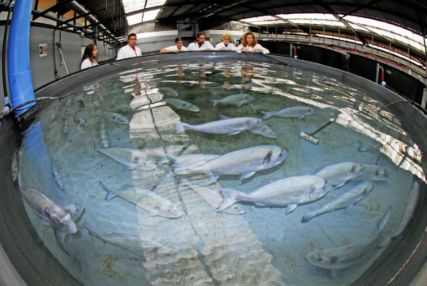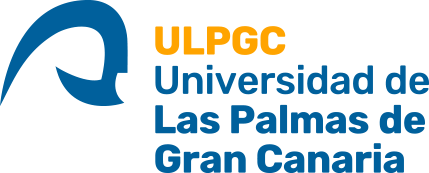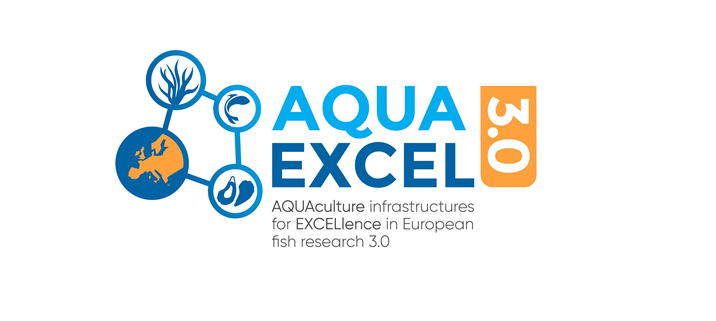Marine Biosecurity Station (MBS)

How to acces our Research Facility
Researchers from any EU or Associated State can apply for access to any of the AQUAEXCEL Research Infrastructures. Applications must be made to use a Research Infrastructure in a different country to that of the lead researcher. Details of the other Research Infrastructures available within AQUAEXCEL can be found on www.aquaexcel.eu and on each institution website.
Each Research Infrastructure has a budget based on units of access, which are detailed for ULPGC on this page. Access to the facilities is provided free of charge to users and travel and subsistence expenses will also be paid. In general, it is anticipated that access will be in the form of one or in some cases two scientists travelling to work at one of the Research Infrastructures for a period of between one and three months.
Applications for Transnational Access may be made by any organisation (including commercial companies), but the conditions of access require the results of the work to be published and made available to the scientific community via standard channels.
Applications for Transnational Access should be made in accordance with the guidance published in regular “Calls for Proposals” that are made available on the project website (www.aquaexcel.eu). Applicants are also encouraged to directly contact individual facilities to discuss their research plans in advance of submitting an application.
Applications for Transnational Access will be reviewed by an expert selection panel and an independent ethics adviser. Projects selected for Transnational Access will be expected to demonstrate high scientific quality, make efficient use of resources and effectively address issues important for the development of European aquaculture – e.g. as expressed through the Strategic Research Agendas of the European Aquaculture Technology and Innovation Platform (www.eatip.eu).
Universidad de Las Palmas de Gran Canaria (ULPGC)
GIA (Grupo de Investigación en Acuicultura) is a Joint Research Unit of the ECOAQUA, with a 30 years experience in fish aquaculture RTD, mainly nutrition, pathology, new species and genetics. One of its main achievements has been the clarification of the biological mechanisms involved in the regulation of the functioning of several tissues by means of dietary nutrients, using histological and immune-histological studies. Besides, GIA has developed physical tagging systems and selection schemes in sparid species and microarrays, and molecular markers for genealogies and health studies (microsatellites, TNF, IL11, GR, HSP70, HSP90, Δ5 and Δ6 desaturases).
Name of the infrastructure: Marine Biosecurity Station (MBS)
Location: Techonological Scientific Park
Web site address: ECOAQUA
Contact: Daniel Montero Vítores / daniel.monterol@ulpgc.es
AQUAEXCEL TNA facility: Marine Biosecurity Station (MBS)
Short description: The MBS is located in the Marine Scientific and Technological Park of the ULPGC and the ULPGC itself and comprises three main RAS units completely equipped to separately challenge with up to three different pathogens at the same time in all phases of fish life cycle including broodstock, larvae and juveniles of marine fish species. Each of them is provided with automatic and programmable control of flow, oxygen concentration, temperature, pH and feeders and is designed to content up to 18 circular tanks of 0.5 m3. Therefore 6 treatments in triplicates can be run at the same time in each unit, but up to 48 tanks can be used if all units are included in the same experiment. The design of the recirculatory units is versatile, which allows a great amount of testing conditions and assays in vivo with any pathogen. It also has a support laboratory in situ, as well as access to the Fish Pathology Laboratory of the Institute of Animal Health and Food Safety (IUSA) and the Microbiology Laboratory, both at the ULPGC, with microbiology and anatomo-pathology techniques ready for all fish and mollusc tissues (including anterior kidney, brain, muscle and bone, among others). These characteristics make the MBS the most versatile and controlled research station in Europe to challenge marine fish with virus, bacteria or parasites. These kind of studies have been conducted by GIA and the Fish Pathology Lab for the last 10 years, fish health and welfare being a main research line of this group. The MBS is a reference center for disease prevention in the Canary Islands and adjacent African countries.
Keywords: Pathogens, microbiology, anatomo-pathology, challenge test, RAS circuits.
Technical labs: Specific and technical labs of bacteriology, virology and anatomo-pathology.
Processing labs: Our facility has different processing labs:
- Bacteriology and Virology, containing all devices for diagnostic in microbiology (PCR, cellular culture systems, gel documentation systems, 5 color gene expression equipment, quality quantifier of nucleic acid, ELISA systems, etc...). Furthermore, our facility has a bank of pathogen from natural population and aquaculture companies.
- Anatomo-Pathology, containing all devices for histological analysis, including hybridisation in situ and image diagnostic.
Lodging facilities: No
SERVICES - scientific support: In marine fish, facilities to provide pathogen-free animals with which to develop large-scale experiments are scarce. In this sense, the MBS supplies pathogen-free animals, which are highly demanded by experimental and industrial laboratories, offering services on pathogen challenge for researchers, feed producers and pharmaceutical companies, developing vaccines, immunestimulants and therapeutical products. The service includes standardised models for several pathogens and infection by intramuscular or intraperitoneal injection, cohabitation, immersion and rectum canulation as well as the development of combined experiments in nutrition and disease. All experiments are supported by biochemical, enzymatic histological, and microbiological analysis.
SERVICES - electronic databases: No
SERVICES - quality assurance: In our facility, ourself protocols are carried out for monitoring the quality of experiments, which are in agreement with regional, national and European legality for ethical and welfare issues.
Safety and ethical issues: A guide for housing and care of marine fish.
Facility Unit 1 Information [Marine Biosecurity Station (MBS)]
Name Facility Unit 1: Marine Biosecurity Station (MBS).
TNA: Yes.
Contact (Researcher): Daniel Montero Vítores / daniel.monterol@ulpgc.es
URL: ECOAQUA
General description: MBS is a flexible infrastructure containing, tanks for challenge test under closed circuit system. This RI consists in 18 independent closed circuit units with three replicate for each, and prepared for on-line monitoring of temperature, oxygen, pH, flow and feed. The tank volumes are 0.5 m3 and 2 m3. The total biomass around 250 - 300 kg. Species: gilthead seabream, red porgy, redbanded seabream, dentex sp, seabass, meagre, seriola sp, etc...
Technical description: As relevant technical features: this infrastructure contents closed circuit systems including biofilters, skimmers and monitoring for feeders, pH, oxygen, temperature and flow.
Remote monitoring & control: MBS allows remote experimentation via the Internet, and information about video monitoring.
Water and environmental conditions: MBS has control of water quality (biofilters), water treatment (ultraviolet) and oxygenation (air and oxygen injection is optional).
Flowrate: The flow rate range per rearing tanks is 2-4 twice per day, while this rate is 4-6 twice for breeder's tanks. The flow is monitored automatically and controlled automatically.
Temperature: It is monitored manually or automatically, and controlled automatically according pathogen.
Salinity: 36 ± 1‰. It is monitored manually.
Oxygen: Range: 6 – 8 mg/l. It is monitored manually or automatically, and also controlled automatically.
pH: 8.2±0.2
Light intensity and wavelength: Visible light controlled manually.
Photoperiod: No.
Fish measurements: Manually are measured the following parameters: size, weight and mortality. Automatically are measured the following parameters: morphological traits, tag, behaviour, genotype by multiplex and molecular markers, pathogens.
Pictures/videos: Two closed circuit systems (biofilters, skimmer, pumps, 3x0.5m3 and 1x2 m3 tanks).
Modality of access
One project is expected to comprise 18 tanks on average during eight weeks. Users are given access to this infrastructure for an average of 8 weeks for in vivo infection experiments. The number of trials per year will depend on the numbers of treatments demanded and the requests by the different partners.
Unit of access
The unit of access is defined as 1 tank/week equalling the occupation of one standard tank for seven days.

The University Institute ECOAQUA is a research centre that belongs to the University of Las Palmas de Gran Canaria, a public institution that offers a wide range of degrees in all the major areas of knowledge, with the aim of providing comprehensive training to those who come to it, in a commitment based on innovation, quality and internationalisation.










